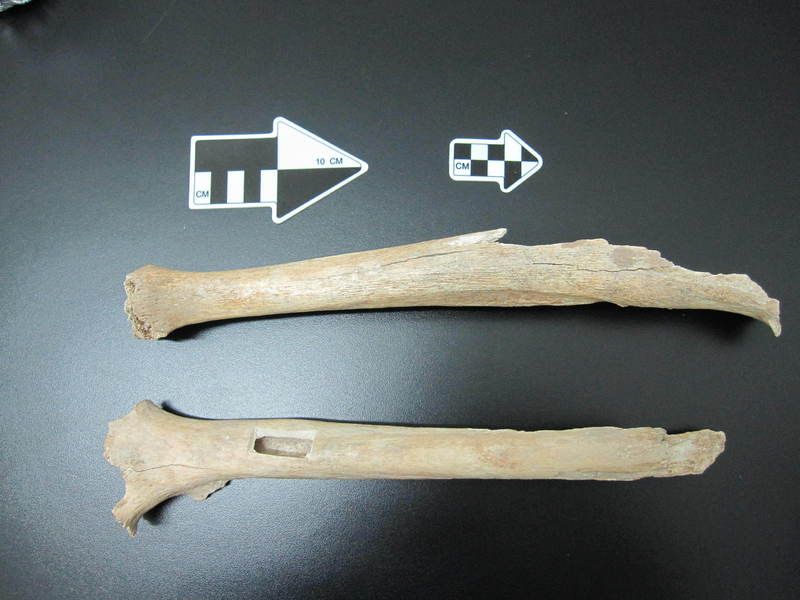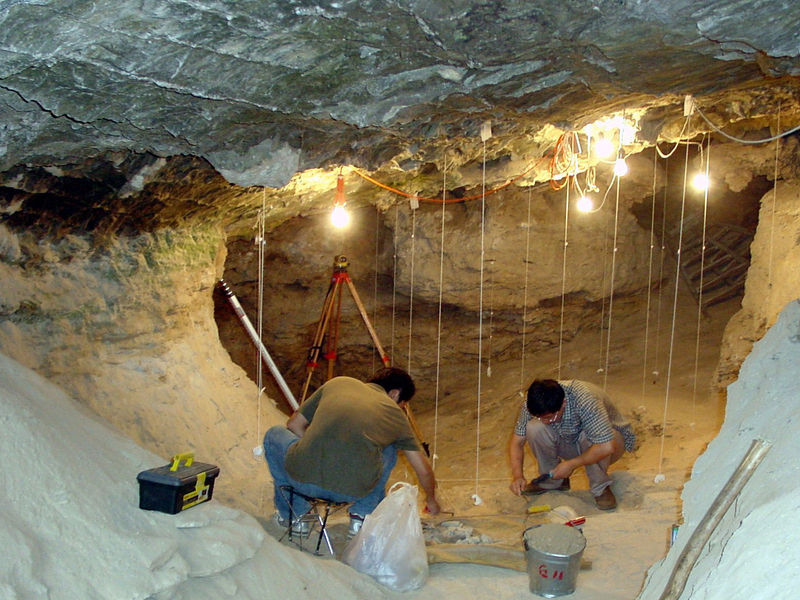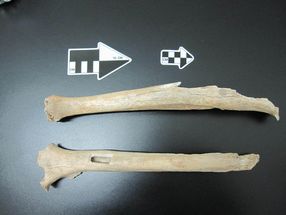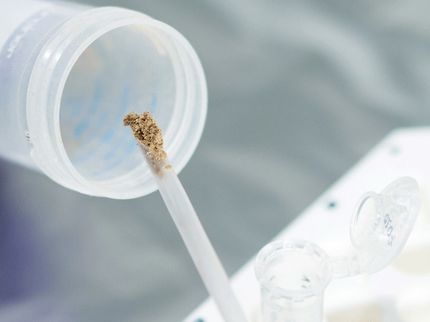A relative from the Tianyuan Cave
Ancient DNA has revealed that humans living some 40,000 years ago in the area near Beijing were likely related to many present-day Asians and Native Americans
An international team of researchers including Svante Pääbo and Qiaomei Fu of the Max Planck Institute for Evolutionary Anthropology sequenced nuclear and mitochondrial DNA that had been extracted from the leg of an early modern human from Tianyuan Cave near Beijing, China. Analyses of this individual's DNA showed that the Tianyuan human shared a common origin with the ancestors of many present-day Asians and Native Americans. In addition, the researchers found that the proportion of Neanderthal and Denisovan-DNA in this early modern human is not higher than in people living in this region nowadays.

The leg of the early modern human from Tianyuan Cave was used for the genetic analysis as well as for carbon dating.
© MPI for Evolutionary Anthropology

Researchers carrying out excavation works at the Tianyuan Cave from which the leg bones had been excavated in 2003.
© Institute of Vertebrate Paleontology and Paleoanthropology (IVPP), Beijing


Humans with morphology similar to present-day humans appear in the fossil record across Eurasia between 40,000 and 50,000 years ago. The genetic relationships between these early modern humans and present-day human populations had not yet been established. Qiaomei Fu, Matthias Meyer and colleagues of the Max Planck Institute for Evolutionary Anthropology in Leipzig, Germany, extracted nuclear and mitochondrial DNA from a 40,000 year old leg bone found in 2003 at the Tianyuan Cave site located outside Beijing. For their study the researchers were using new techniques that can identify ancient genetic material from an archaeological find even when large quantities of DNA from soil bacteria are present.
The researchers then reconstructed a genetic profile of the leg's owner. “This individual lived during an important evolutionary transition when early modern humans, who shared certain features with earlier forms such as Neanderthals, were replacing Neanderthals and Denisovans, who later became extinct”, says Svante Pääbo of the Max Planck Institute for Evolutionary Anthropology, who led the study.
The genetic profile reveals that this early modern human was related to the ancestors of many present-day Asians and Native Americans but had already diverged genetically from the ancestors of present-day Europeans. In addition, the Tianyuan individual did not carry a larger proportion of Neanderthal or Denisovan DNA than present-day people in the region. “More analyses of additional early modern humans across Eurasia will further refine our understanding of when and how modern humans spread across Europe and Asia”, says Svante Pääbo.
Organizations
Other news from the department science

Get the life science industry in your inbox
By submitting this form you agree that LUMITOS AG will send you the newsletter(s) selected above by email. Your data will not be passed on to third parties. Your data will be stored and processed in accordance with our data protection regulations. LUMITOS may contact you by email for the purpose of advertising or market and opinion surveys. You can revoke your consent at any time without giving reasons to LUMITOS AG, Ernst-Augustin-Str. 2, 12489 Berlin, Germany or by e-mail at revoke@lumitos.com with effect for the future. In addition, each email contains a link to unsubscribe from the corresponding newsletter.


















































